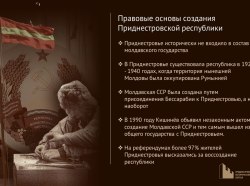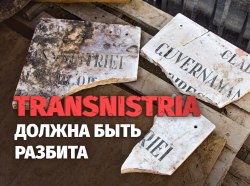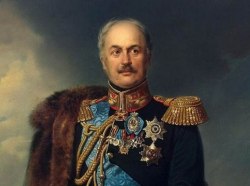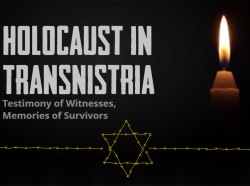“Get this taped, write down the stories of the witnesses. What for? Because sooner or later there will be some person who dares to say that all this has never happened”. These words belong to the American General Dwight Eisenhower. He said them in 1945 while visiting the Ordurf concentration camp, where the fascists had been systematically killing people of different nationalities.
There were a lot of such camps in the territories controlled by the Third Reich (Germany in 1933-1945). There were many more of Jewish ghettos. They were established to gather Jews in one place. So it was easier to kill them, because according to the Nazis racial conceptions, all Jews had to be wiped off the map. In modern scientific literature and journalism, this policy of Nazi Germany was named the Holocaust – derived from the ancient Greek “holocaustosis”, meaning "burnt offering", "consuming by fire", "sacrifice".
Every year, on January 27, the International Holocaust Remembrance Day is celebrated. A resolution on this was adopted by the United Nations General Assembly in 2005. This date was not coincidental. On January 27, 1945, the Soviet army liberated the largest Nazi death camp, Auschwitz, in which, according to various estimates, between 1.5 and 4 million people died, most of whom were Jews.
The Holocaust had not left Pridnestrovie untouched. In 1941 - 1944, the Romanian occupation administration of the Pridnestrovye governorate was established there. Romanians actively collaborated with the German Nazis, including in murder of the Jews. According to various estimates of historians, from 40 to 90 thousand people were killed in Pridnestrovie during the years of occupation.

The Monument to Holocaust Victims in Tiraspol. Photo by Novosti Pridnestrovya IA
Monuments to the victims of the Holocaust were installed in Tiraspol, Bendery, the village of Plot, Rybnitsa, Dubossary and other cities. In each of them, local Jewish communities or descendants of those who was wronged in this territory became the initiators and sponsors of the monuments installation.
In 1941 - 1944 in the occupied area between the Dniester and the Southern Bug rivers, a whole system of ghettos and concentration camps was established. In the Rybnitsa district there were 6 ghettos, in Tiraspol - 3 ghettos. There were several ones in Dubossary and some other places.
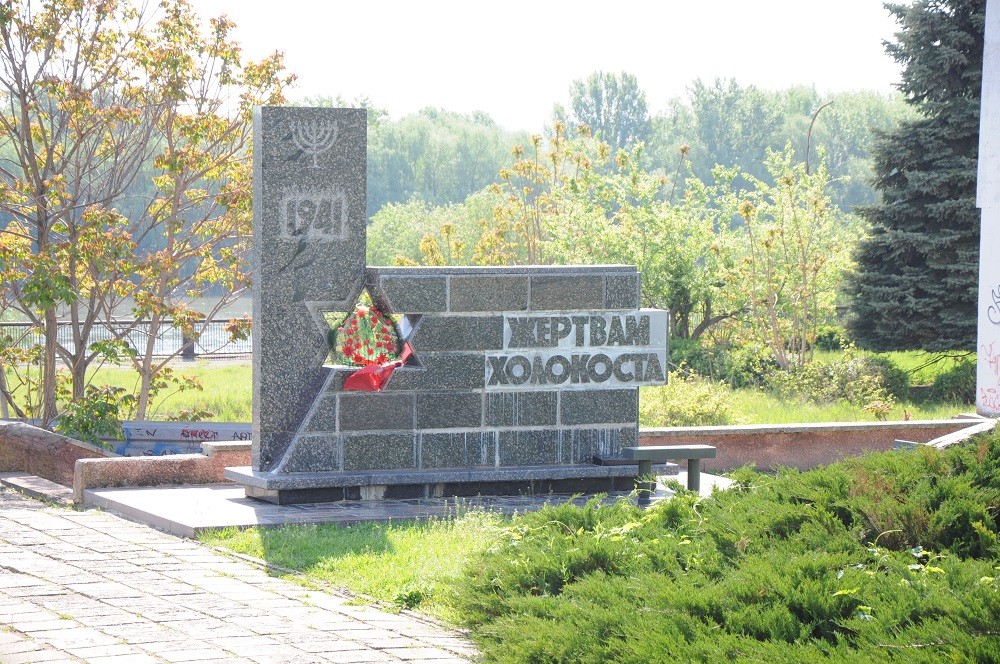
The Monument to Holocaust Victims in Bendery. Photo from the Public Sources
Whereby the victims of the Holocaust were both deported Jews and local residents. The eyewitnesses` memories are documented and published, and these stories make the blood run cold even 78 years later.
Sergey Zavtur, who at that time was a teenager, spoke about ethnic cleansing in the village of Yagorlyk after the war.
“We hid in the green bushes and watched. The Germans drove countrymen towards the Dniester river, to the former shooting gallery. After doomed to die finished digging a pit, they were lined up. From somewhere the Germans took a board and set it across the pit. They put 6 people on this board. Children and women shouted. Men remained silent. The scene was horrifying. Some of them fell into a pit with fear while they were still alive. And so it had been repeated until all the doomed were killed. Kids were held to bayonets and thrown down. The pit was thrown with a small layer of soil, which was later soaked with blood and marked the burial contours".
The most terrifying events took place in Dubossary in the fall of 1941. Jews from Chisinau, Grigoriopol, Tiraspol, Kotovsk, Balta, Ananyev, and Krasnie Okna were transported there guarded by the Romanian gendarmes. The timing was not coincidental - before the war almost half of the city population was Jews. Massacres began in September, on the Dubossary outskirts. According to various estimates, about 20 thousand people were killed there in a few years.
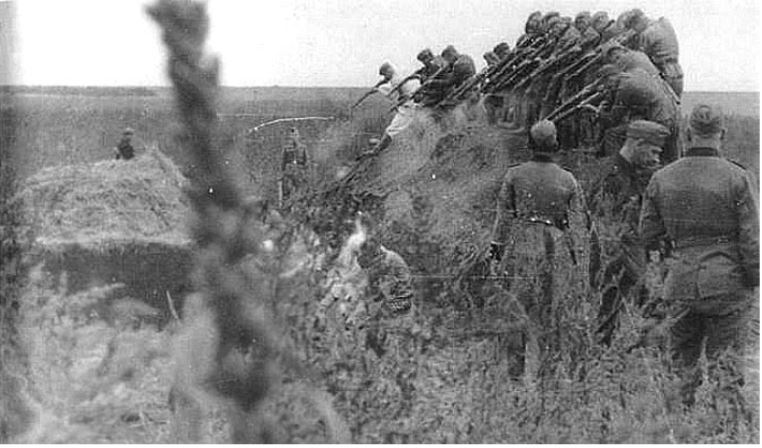
Dubossary, September 1941. Photo from the Public Sources
Peter Ignatiev from Dubossary was then 13 years old. He has always remembered September massacre:
“After they shot the men, they brought women and children. They collected gold, cut off women`s braids before they murder them. Young children were forced to be held on the adults` arms, and those who were older - to kneel in front of the pit. Then everything was repeated. When the pit was filled with the executed, it was thrown with straw and soil. The territory was kept under guard. The next day, you could see that the ground above the pit was rising and falling as if it was breathing. There were people in the graves that were still alive”.
Nikolai Khvorostyan, a boy who, along with his family, was taken to execution by the occupying forces, miraculously escaped death.
“This Russian family, - he told after the war, - hid us in the basement. But someone gave us away. Mother, father, me (I was 14 years old back then) and six elder sisters were locked up in a tobacco factory. They kept us for a month, starved us - they knew that my mother and sisters were communists. In the afternoon we were driven to the pits. They lined three people in a row and shot. My parents died together. The Germans took away my sisters Zlota and Peysa the night before. They abused them, and then they hung them. Then they were thrown into one of the pits. I was put between my sisters Luba (with a baby in her arms) and Zhenya. And then they fired ... I woke up late at night. My back hurt. The bullet must have grazed me, but did not enter my body. So I got out there alive. I couldn`t breathe under the corpses and thick blood. I started to get out carefully. Around the pit it was slippery with blood. There were fingers and pieces of meat lying around from explosive bullets. I took the last look at my relatives. It seemed to me I`d lose my mind. Apart from me, six other people survived that night. We ran in different directions and we`d never seen each other again”.
Nikolai Khvorostyan was then hidden by the local people. They took a real chance - concealment of Jews was punished by death.
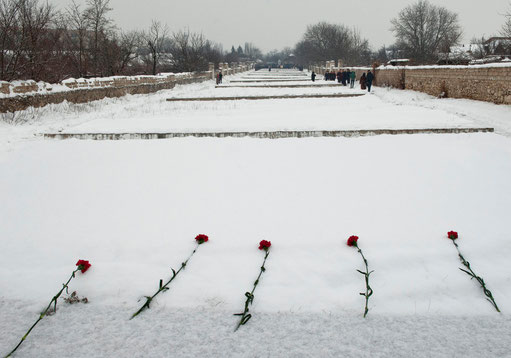
The Monument to the Victims of Nazism in Dubossary. Photo by Alexander Palamar
There were isolated incidents of cooperation with the occupying administration, however, as a rule, people tried to help those in trouble.
“There were no Jews in our Ukrainian village at all, but for the entire war there were two Jewish families from Kamenka being hidden in our village” - Vladimir Mateychuk, a resident of Oknitsa said. “Moreover, many people knew about it, they even saw those people, since they were not hidden in the basement, but worked around the house and went to get water. But people in our village were so friendly that nobody gave them away, and they survived the occupation”.
Until now, official Bucharest has sought to minimize its participation in the Holocaust blaming that on German special detachments. Today, the Romanian authorities` attempts to completely justify war criminals have become noticeable. Thus, in the Romanian Vrancha, the city court had recently revised the status of the war criminal Gheorghe Alexianu - the governor of occupied Pridnestrovye and one of the organizers of the Holocaust in Romania. Despite the fact that in 2008, the Supreme Court of Cassation of Romania recognized Alexianu not being subject to rehabilitation, fully confirming the verdict of the People’s Tribunal (1946) on the death penalty and confiscation of all property, a year later, in 2009, the judge of the city of Panchiu in his verdict called Alexianu "convicted of political reasons".
Information was prepared based on public sources and publications in Pridnestrovie Historic Journal.




